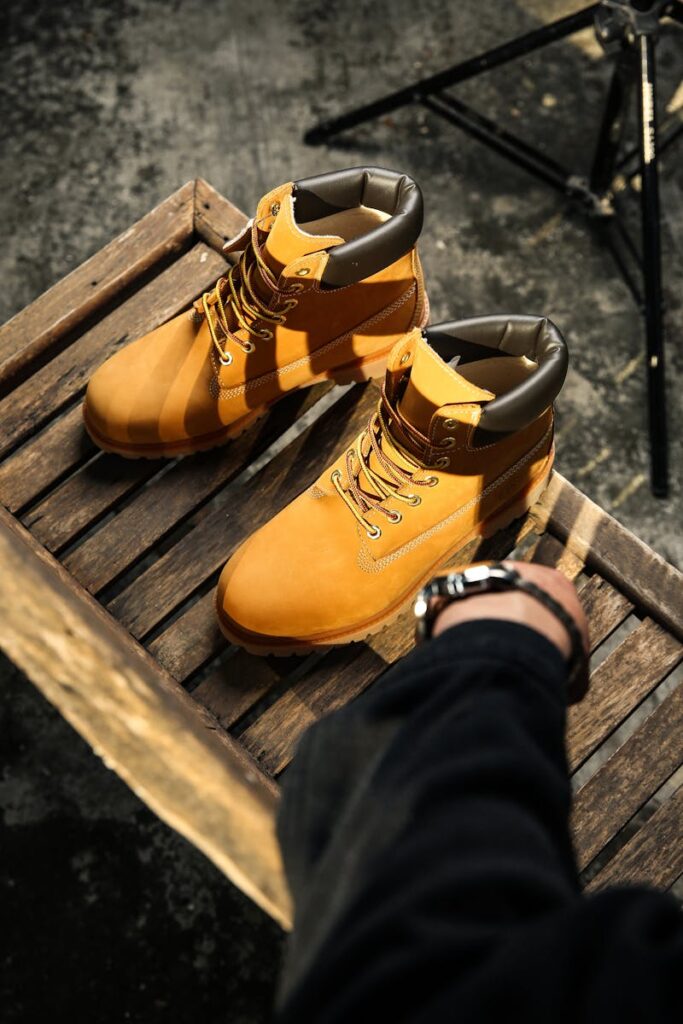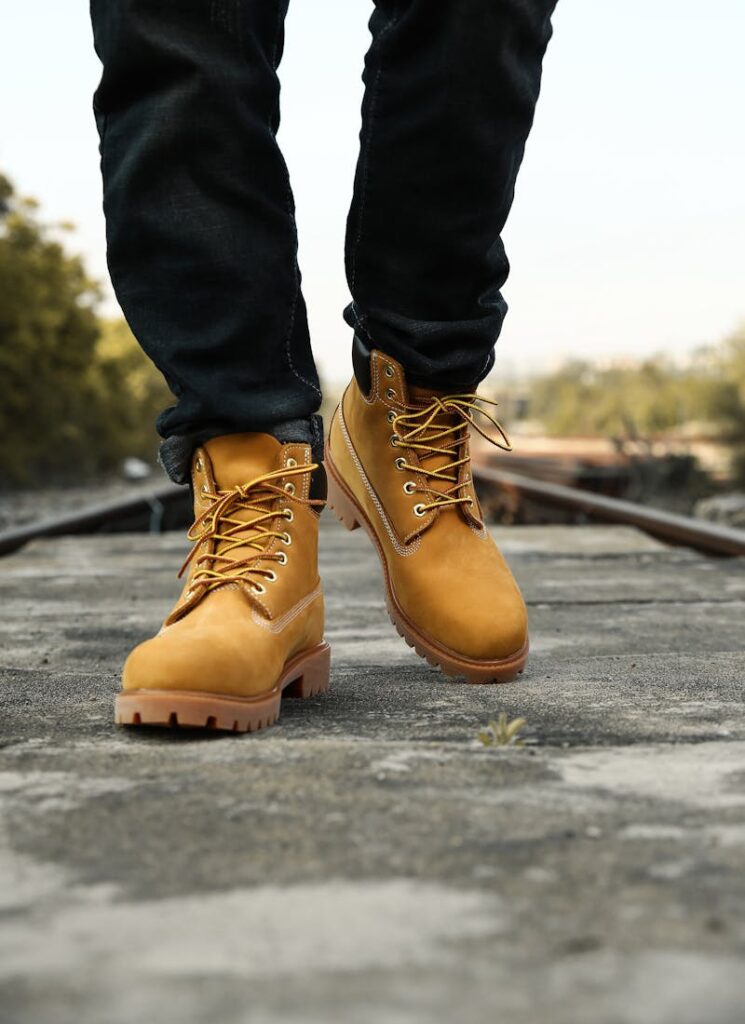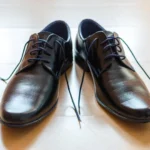Introduction
You may wonder what type of leather that is used on Timberlands.
When it comes to iconic footwear, Timberland boots are a staple in many wardrobes around the world.
These rugged, durable boots are not only fashionable but also known for their quality craftsmanship.
One of the key aspects that contribute to the durability and style of Timberland boots is the type of leather used in their construction.
In this article, we will talk about Timberland boots and find out what kind of leather they are made of.
We will uncover the history of Timberland boots, the different types of leather used, how the leather is sourced, the tanning process, the benefits of leather in Timberland boots, how to care for them, and whether they are worth the investment.
So, lace up your boots, and let’s dive in!
What Type Of Leather Are Timberlands Made Of?
Timberland boots are primarily made of premium quality leather that undergoes a rigorous manufacturing process to ensure durability, comfort, and style.
The brand is synonymous with using high-grade leather that can withstand the elements and everyday wear and tear.
Timberland uses leather that is carefully selected to meet the brand’s standards of excellence and longevity.
The History of Timberland Boots
Timberland, a renowned American manufacturer and retailer of outdoor wear, particularly footwear, was founded in 1952 in Boston, Massachusetts.
The company gained widespread recognition for its iconic waterproof leather boots.
These were known as the Timberland Yellow Boot, which was introduced in 1973.
These boots revolutionized the industry with their combination of functionality, durability, and style.
Over the years, Timberland boots have become a symbol of rugged outdoor fashion
As Well as garnered a loyal following among outdoor enthusiasts, fashionistas, and workers alike.
The brand’s commitment to quality craftsmanship and sustainable practices has solidified its position as a leader in the footwear industry.
Different Types of Leather Used in Timberland Boots
Full-Grain Leather
One of the most common types of leather used in Timberland boots is full-grain leather.
This type of leather is known for its natural look and durability, making it ideal for outdoor footwear like Timberlands.
Full-grain leather retains the unique markings and character of the hide, giving each pair of boots a distinct appearance.
Full-grain leather is also water-resistant and ages beautifully over time, developing a rich patina that adds to the boot’s charm. It is less processed than other types of leather, making it thicker and more resistant to wear and tear.
Timberland’s signature Yellow Boot is often made with full-grain leather due to its exceptional quality and rugged nature.
Nubuck Leather
Nubuck leather is another popular choice for Timberland boots, valued for its velvety texture and luxurious look.
This type of leather is made by sanding the outer layer of the hide to create a soft nap that resembles suede.
Nubuck leather is more delicate than full-grain leather but still offers excellent durability and water resistance when properly cared for.
Timberland uses nubuck leather in many of its boot styles to achieve a more refined aesthetic. This still maintains the brand’s high standards of quality.
Nubuck leather gives the boots a sleek, premium finish that appeals to those seeking a versatile and stylish footwear option.
Suede Leather
This is a softer and more supple type of leather that is commonly used in fashion-forward Timberland boot designs.
You create suede by sanding the inner layer of the hide, resulting in a smooth surface with a plush feel.
While suede is not as durable as full-grain leather, it offers a sophisticated and elegant look.
This is perfect for casual occasions.
Timberland incorporates suede leather into some of its boot styles to cater to customers looking for a more fashion-forward option without compromising on comfort.
Suede boots from Timberland are often treated.
Protective coatings are often applied to suede Timberlands to enhance their water resistance and longevity.
How Is Leather Sourced for Timberland Boots?
The leather used in Timberland boots is sourced from reputable tanneries around the world that comply with strict environmental and ethical standards.
Sustainability and responsible sourcing practices are a commitment of Timberland..
Ensuring that the leather used in their products is ethically produced and environmentally friendly.
The brand works closely with its tannery partners to trace the origins of the leather and verify that it comes from reputable sources.
Timberland prioritizes transparency in its supply chain to uphold its values of integrity and social responsibility.
By partnering with certified tanneries, Timberland ensures that the leather used in their boots meets high-quality standards and aligns with their commitment to sustainability.

The Tanning Process of Leather
The tanning process plays a crucial role in transforming raw hides into durable, high-quality leather, which is suitable for use in Timberland boots.
There are two primary methods of tanning used in the industry: vegetable tanning and chrome tanning, each with its unique characteristics and benefits.
Vegetable Tanning
Vegetable tanning is an ancient method of tanning leather using natural tannins found in plants, barks, and fruits.
This traditional tanning process is eco-friendly and results in leather that is sturdy, breathable, and develops a rich patina over time.
Vegetable-tanned leather is known for its earthy scent and ability to absorb dyes and oils, making it a popular choice for artisanal and high-end leather goods.
Timberland may use vegetable-tanned leather in some of its boot styles to cater to customers who value sustainability and appreciate the unique character of this type of leather.
Vegetable tanning requires skilled craftsmanship and a longer processing time, but the end result is a premium-quality leather that ages gracefully with proper care.
Chrome Tanning
Chrome tanning is a modern method of tanning leather using chromium salts to achieve faster and more consistent results.
The industry widely uses this process for its efficiency and ability to produce soft, supple leather with uniform coloration.
Chrome-tanned leather is known for its water resistance and affordability.
This makes it a practical choice for mass-produced footwear like Timberland boots.
Timberland may utilize chrome-tanned leather in its boot manufacturing process to meet the demand for durable and cost-effective footwear options.
Chrome tanning allows for greater flexibility in design and can produce leather with varying textures and finishes to suit different styles and preferences.
Benefits of Leather in Timberland Boots
Leather offers a multitude of benefits that make it an ideal material for crafting Timberland boots.
Some of the key advantages of using leather in footwear include:
- Durability: Leather is a tough and long-lasting material that can withstand daily wear and tear. This makes Timberland boots a reliable choice for outdoor activities and rugged terrain.
- Water Resistance: Many types of leather, such as full-grain and nubuck, are naturally water-resistant. This ensures that your feet stay dry and comfortable in wet conditions.
- Breathability: Leather is a breathable material that allows air circulation, preventing sweat and odor buildup inside the boots and keeping your feet cool and dry.
- Comfort: Leather molds to the shape of your feet over time, providing a custom fit and unmatched comfort for extended periods of wear.
- Style: Leather has a timeless appeal and versatile aesthetic that complements a wide range of outfits, from casual to formal, making Timberland boots a fashionable choice for any occasion. By incorporating leather into their boot designs, Timberland delivers footwear that not only looks good but also performs well in various environments, making them a popular choice for outdoor enthusiasts and fashion-conscious individuals alike.
Caring for Leather Timberland Boots
Proper maintenance is essential to prolonging the life of your leather Timberland boots and keeping them looking their best.
Here are some tips for caring for your boots:
- Regular Cleaning: Wipe off dirt and dust with a soft, damp cloth or brush to prevent buildup and maintain the leather’s appearance.
- Conditioning: Apply a leather conditioner or cream to moisturize the leather and prevent it from drying out or cracking.
- Waterproofing: Use a quality waterproofing spray or wax to protect your boots from moisture and maintain their water resistance.
- Storage: Store your boots in a cool, dry place away from direct sunlight to prevent fading and damage to the leather.
- Polishing: Periodically polish your boots with a matching shoe polish to restore luster and shine to the leather.
- Avoiding Harsh Chemicals: Refrain from using harsh cleaning agents or solvents on your boots. They can damage the leather and strip away its natural oils.
By following these care guidelines and investing a little time and effort in maintaining your leather Timberland boots, you can enjoy them for years to come and preserve their quality and appearance.
Are Timberland Boots Worth the Investment?
Many consumers consider Timberland boots a worthwhile investment for quality, craftsmanship, and style.
While the initial cost may be higher than other brands, the durability and longevity of Timberland boots make them a cost-effective choice in the long run.
The use of high-grade leather and superior construction techniques ensures that Timberland boots can withstand years of use.
Additionally, Timberland has a commitment to sustainability and ethical sourcing practices resonates with environmentally conscious consumers who value products that are made with integrity and care.
By choosing Timberland boots, you are not only investing in a reliable and stylish footwear option but also supporting a brand that prioritizes social and environmental responsibility.
In conclusion, Timberland boots are more than just shoes; they are a symbol of quality, craftsmanship, and authenticity.
Whether you wear them for work, outdoor adventures, or casual outings, Timberland boots are a versatile and enduring footwear choice that embodies the spirit of adventure and exploration.

FAQs
Are Timberland boots made of real leather?
Yes, real leather is used on the majority of Timberland Boots, with full-grain, nubuck, and suede being the most commonly used types in their designs.
Can Timberland boots withstand harsh weather conditions?
Timberland boots are durable and water-resistant, making them suitable for various weather conditions, including rain, snow, and rough terrain.
How long do Timberland boots last?
With proper care and maintenance, Timberland boots can last for many years, providing comfort, style, and reliability throughout their lifespan.
Can you resole Timberland Boots?
Resoling Timberland Boots are generally not what they’re designed for.
Some repair shops may offer resoling services for certain styles depending on the extent of wear and damage.
Do Timberland boots stretch over time?
Leather Timberland boots may stretch slightly over time as they conform to the shape of your feet.
This provides a more custom and comfortable fit.
Can you wear Timberland boots in the summer?
While Timberland boots are known for their durability in colder months, some styles are designed for summer wear, offering breathability and comfort in warmer weather conditions.
Conclusion
Timberland boots are crafted with a meticulous attention to detail and a commitment to quality.
This sets them apart from other footwear brands.
The type of leather used in Timberland boots, whether full-grain, nubuck, or suede, contributes to their durability, style, and versatility.
By choosing Timberland boots, you are not only investing in a pair of high-quality, long-lasting shoes. You are also supporting a brand that values sustainability, ethical sourcing, and responsible manufacturing practices.
Whether you’re exploring the great outdoors or navigating urban landscapes.
Timberland boots are a reliable and fashionable companion for all your adventures.
So, step into a pair of Timberlands and experience the comfort, style, and durability that have made them an enduring symbol of quality footwear.



